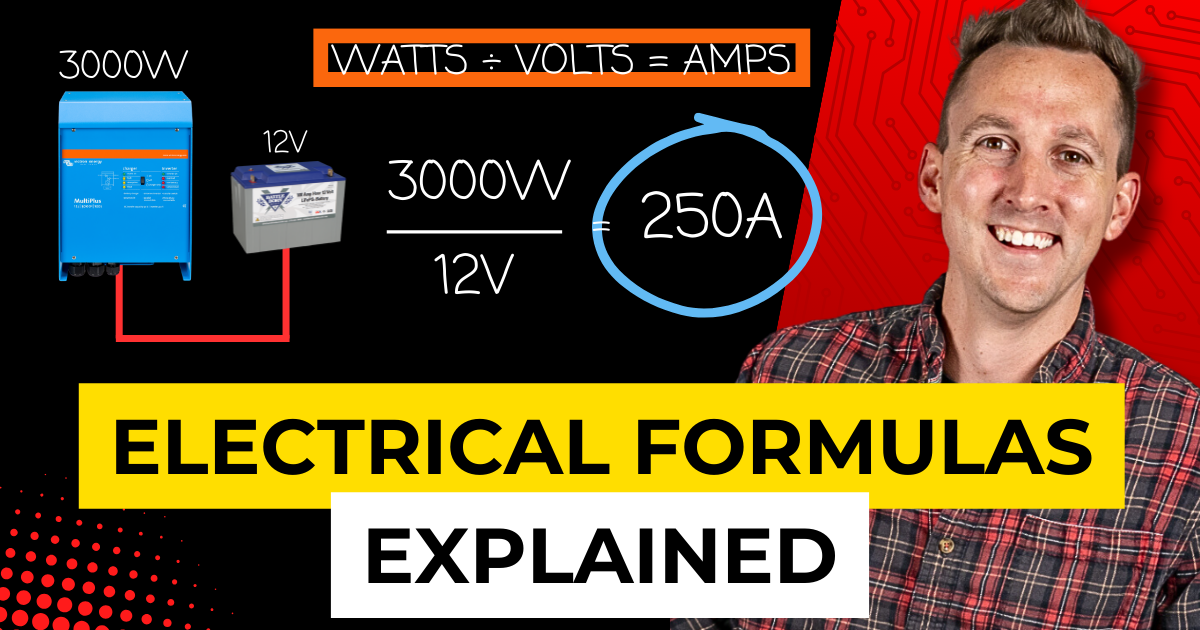When you are dealing with off-grid electrical systems, you HAVE to know some basic math in order to design them properly or even to operate them.
Learning how to convert back and forth from amps, volts, amp hours and more is exactly what we are going to cover here in lesson 1.3 of this Electrical Terminology Chapter.

{{Coming Soon}}

Watt’s Law defines the relationship between watts, volts, and amps, and says that the power in a circuit is a product of the voltage and the current. The formula of Watt’s law (P = I x V) is what helps us determine these relationships when a variable is unknown. Watts law is a derivative of Ohms Law, and for those of you reading this who are already experts in this stuff who say that Watts law doesn’t exist… here are my sources cited.

For the rest of you…Welcome back to algebra!
If you have a device that tells you how many amps it draws and the voltage at which it operates, you can determine the watts by multiplying the amps by the volts.
For example, The power supply for this Ring Camera lists its power output at 5 volts and 2 amps. By multiplying 5V x 2A, we can see that this power supply can put out a max of 10W, which means that it will also pull about 10W from its source, not counting for any efficiency losses that aren’t listed.
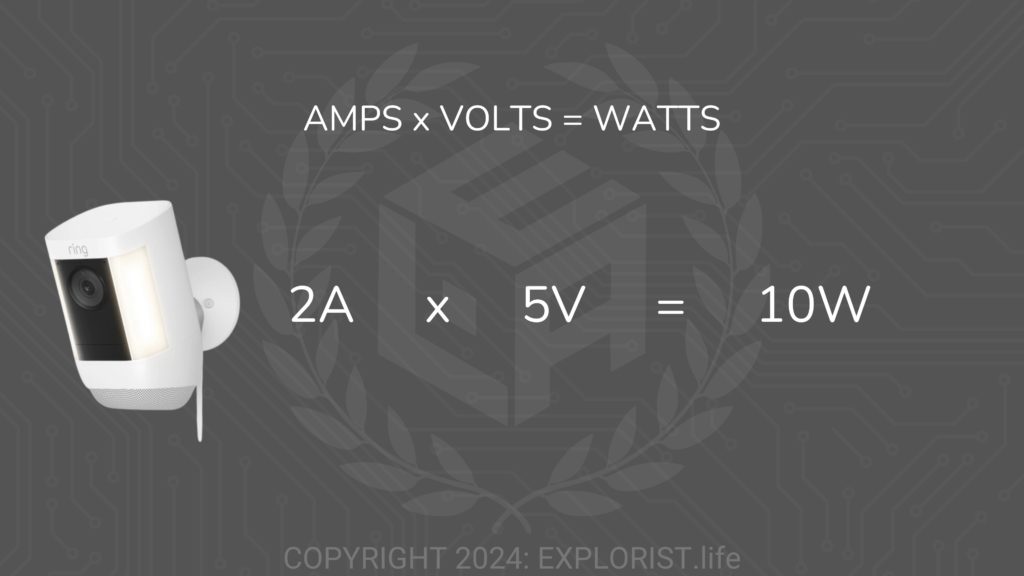
Let’s say that you have a 3000W inverter powered from a 12V battery bank and want to know how many amps you can anticipate flowing through the wire from the battery to the inverter to size the wire.
You would take 3000W divided by 12V, which gives you 250A.
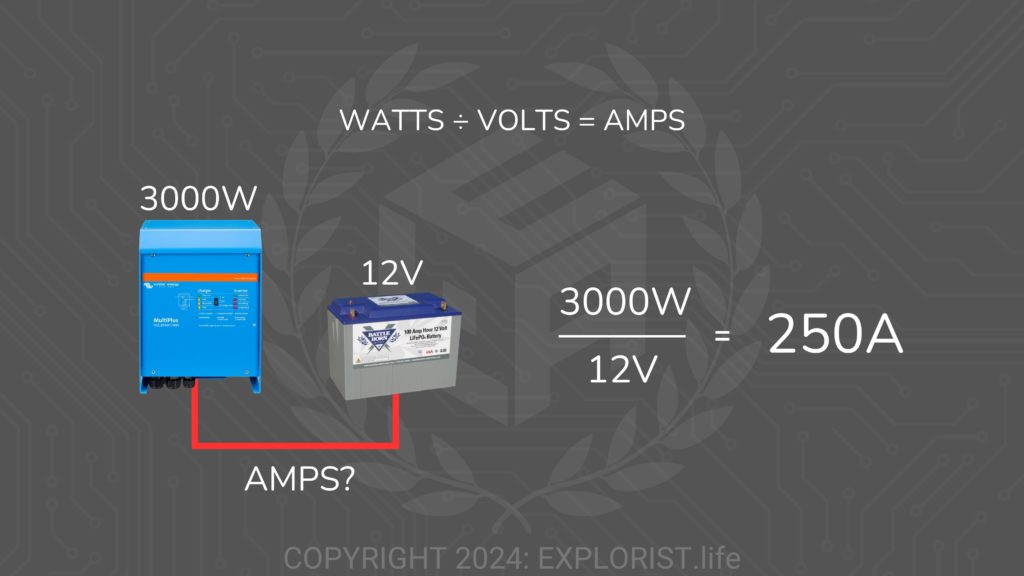
I couldn’t think of a real-life example of a time when you would have both Watts and Amps available but not volts, but if you stumble across something like this, it’s as simple as dividing watts by amps, and that will give you the operating voltage of whatever it is that is being powered.
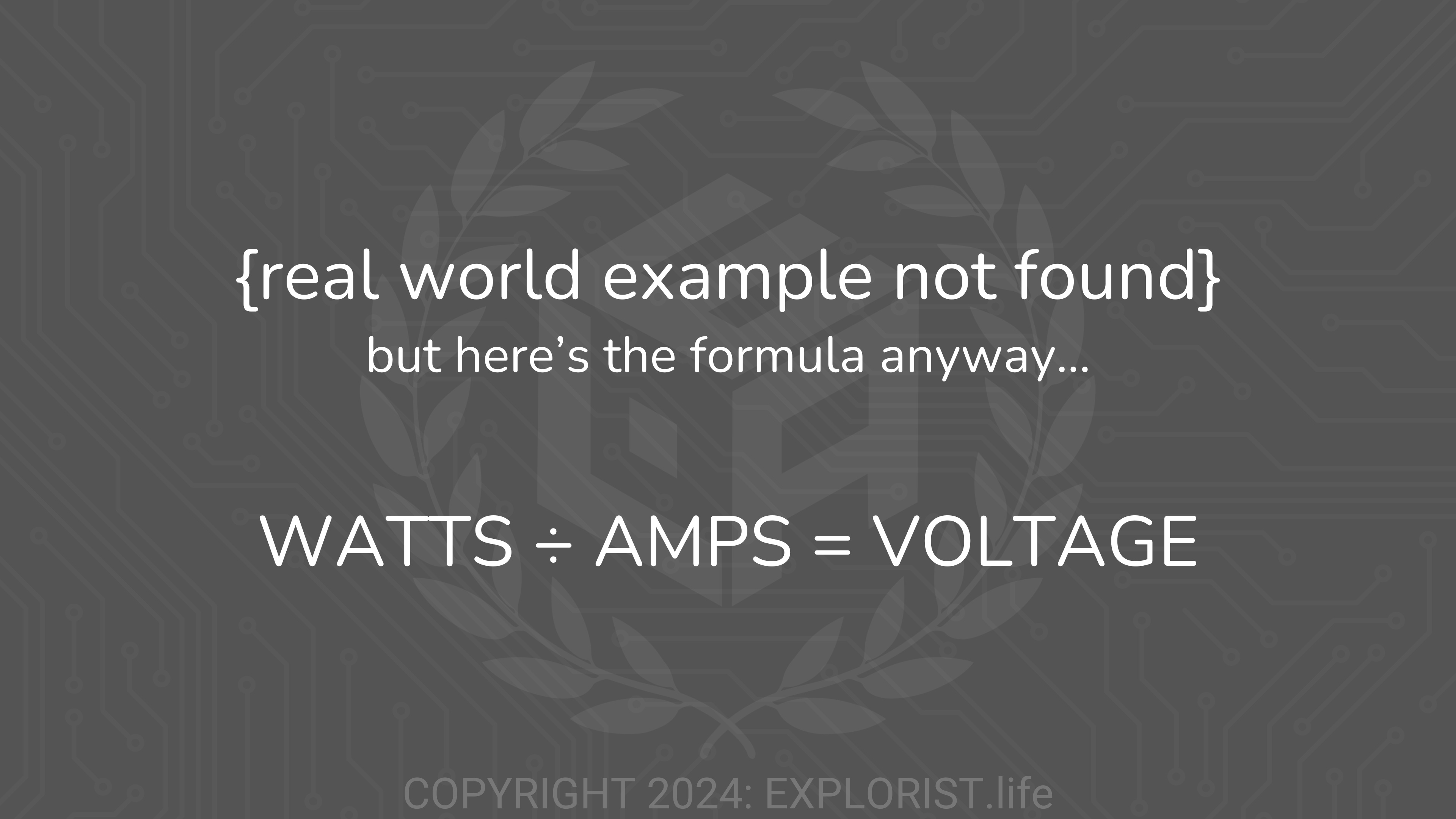
If you are trying to compare the capacity of two different batteries, one of which lists its capacity in Amp Hours and the other lists its capacity in Watt Hours, you will need to be able to convert one of those to the other to compare apples to apples.
We can start with the one listed in amp hours and multiply the amp hours by the operating battery bank voltage, which will give us Watt Hours.
Or to go the other direction, We can take the watt hours divided by the battery bank operating voltage, which will give us the amp hours.
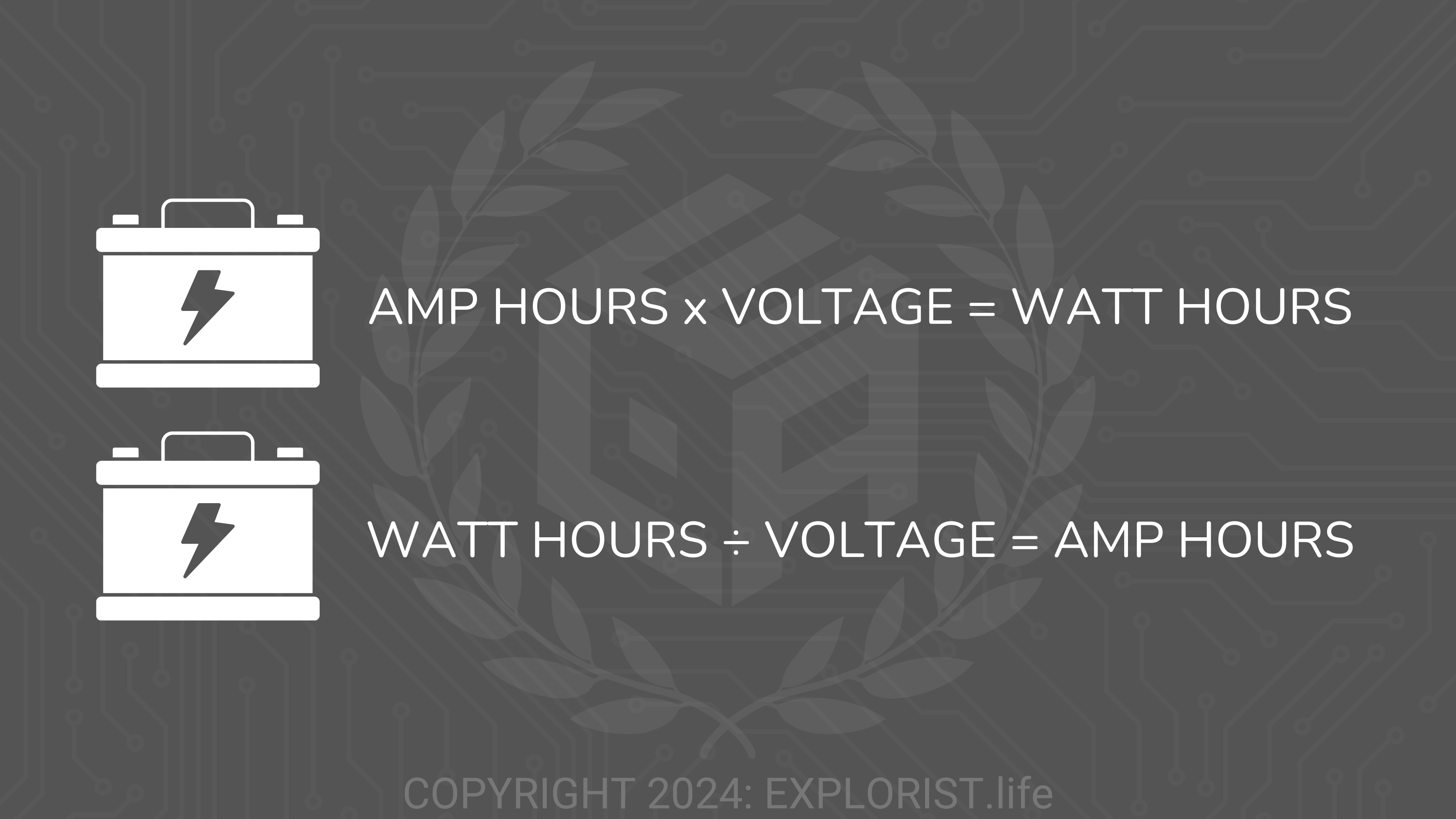
This is also a really good thing to understand especially when you are trying to compare battery storage capacities between portable power units and stand-alone batteries.
There for a while, there were a few portable power units claiming a 100Ah battery capacity, but that battery was only a 10V battery; which means it has 1000Wh by the math you just learned.
These brands were marketing themselves as apples-to-apples to popular Lithium Battery manufacturers like Battle Born Batteries; where it was a misleading comparison because a Battle Born 12V battery has a resting voltage of, we will call it 13 volts for easy math, which means there is 1300Wh in a Battle Born Battery.
As you can see, a portable power station with a lower voltage battery claiming it has 100Ah is ‘technically’ correct; but comparing itself to a battery at 13V, is pretty misleading and a difference of about 300Wh.
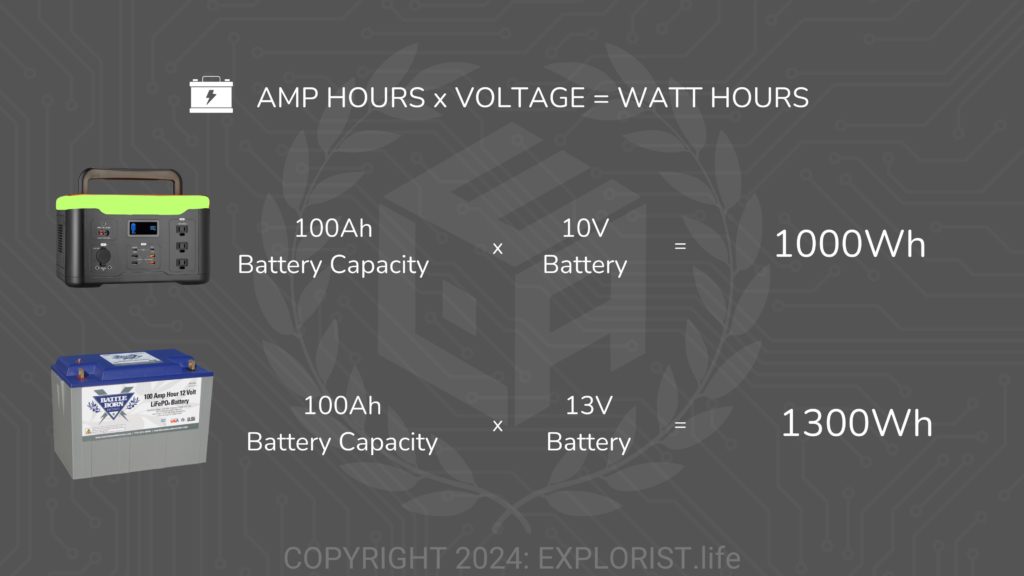
So be careful out there; but more importantly, be informed.
If you have the wattage of a device and know how many hours you will be running the device, you can simply multiply the watts by the hours to get the watt-hours.
For example, if you had a 1200W air fryer and were baking a cake for 2 hours, you would take 1200W x 2 Hours, and that would give you 2400 watt-hours used.
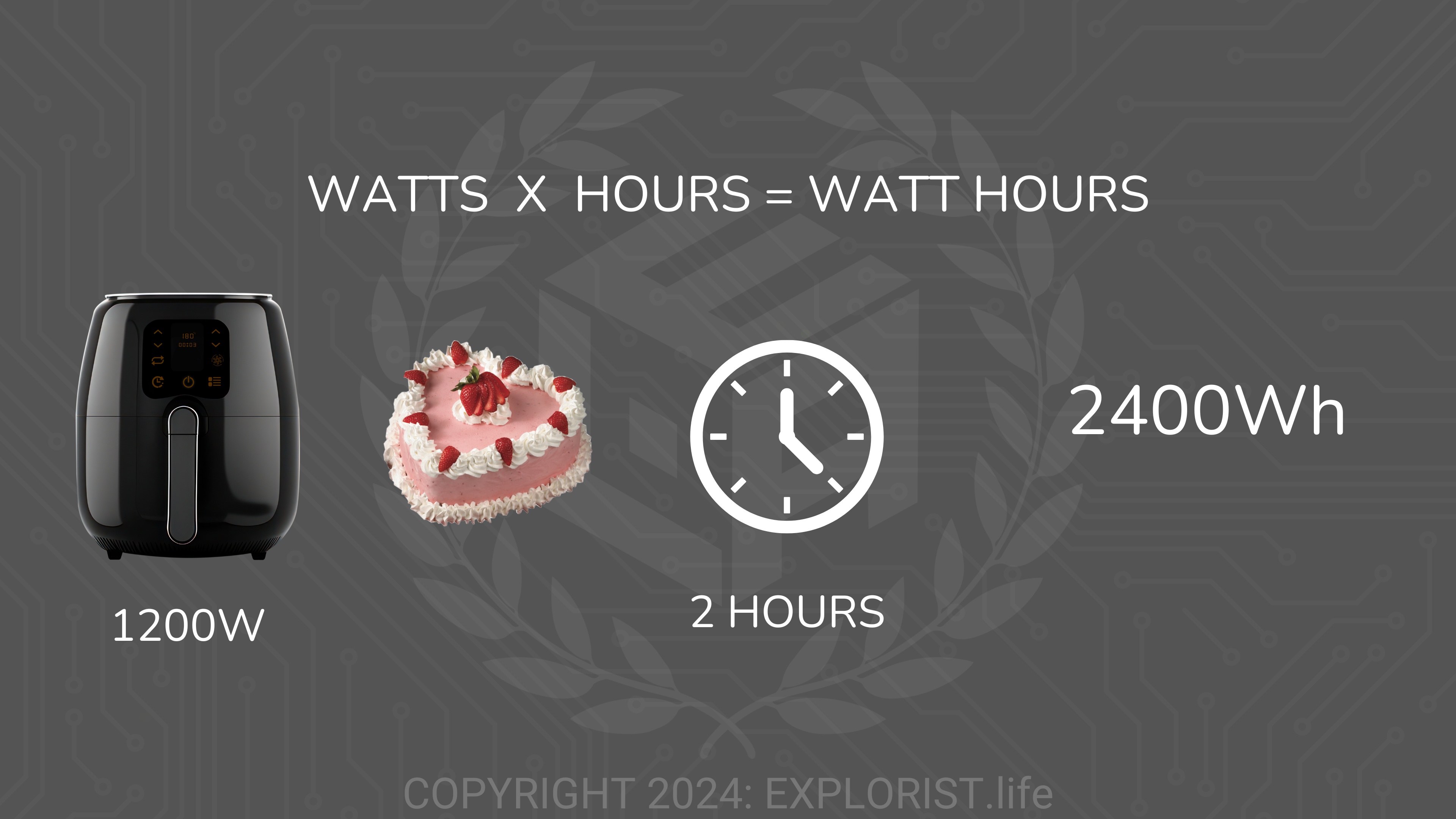
Similar to finding watt hours, there is just one extra step to go from watts and minutes to watt-hours.
For example, if we have a coffee maker that operates at 1200W but only brews coffee for 5 minutes, we can multiply 1200W x 5 minutes to give us 6000 watt-minutes and then divide that by 60 (since there are 60 minutes in an hour) to give us 100 watt-hours.
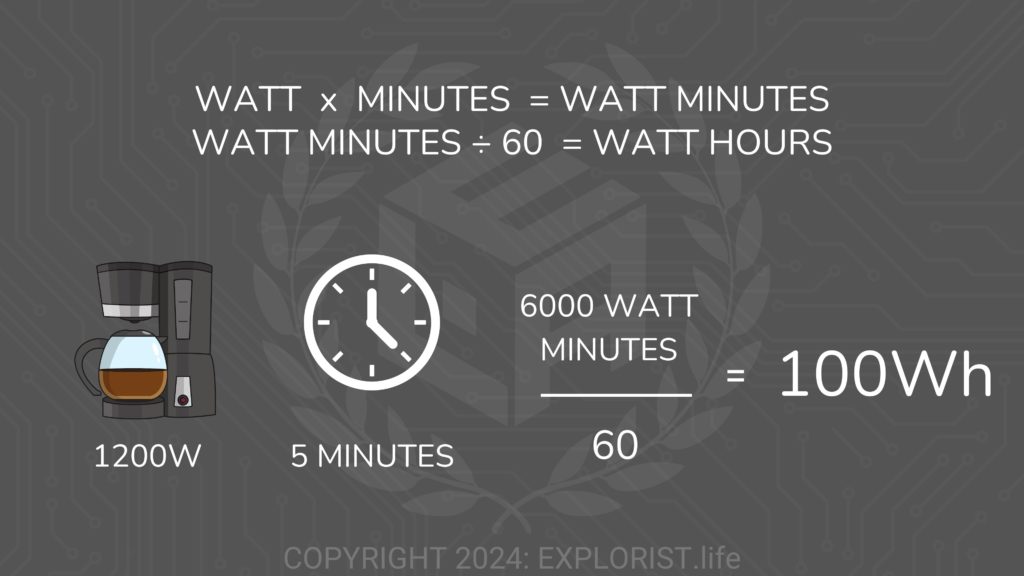
Similar to finding watt hours from watts and minutes, finding amp hours from amps and minutes is multiplying the amps by minutes and then dividing by 60.
For example, if we have a coffee maker pulling 250A from a 12V battery bank during its brew time of 5 minutes, we can take 250A x 5 minutes, which gives us 1250 amp-minutes. Then divide by 60, since there are 60 minutes in an hour, which gives us 20.8 amp hours pulled from the 12V battery bank.
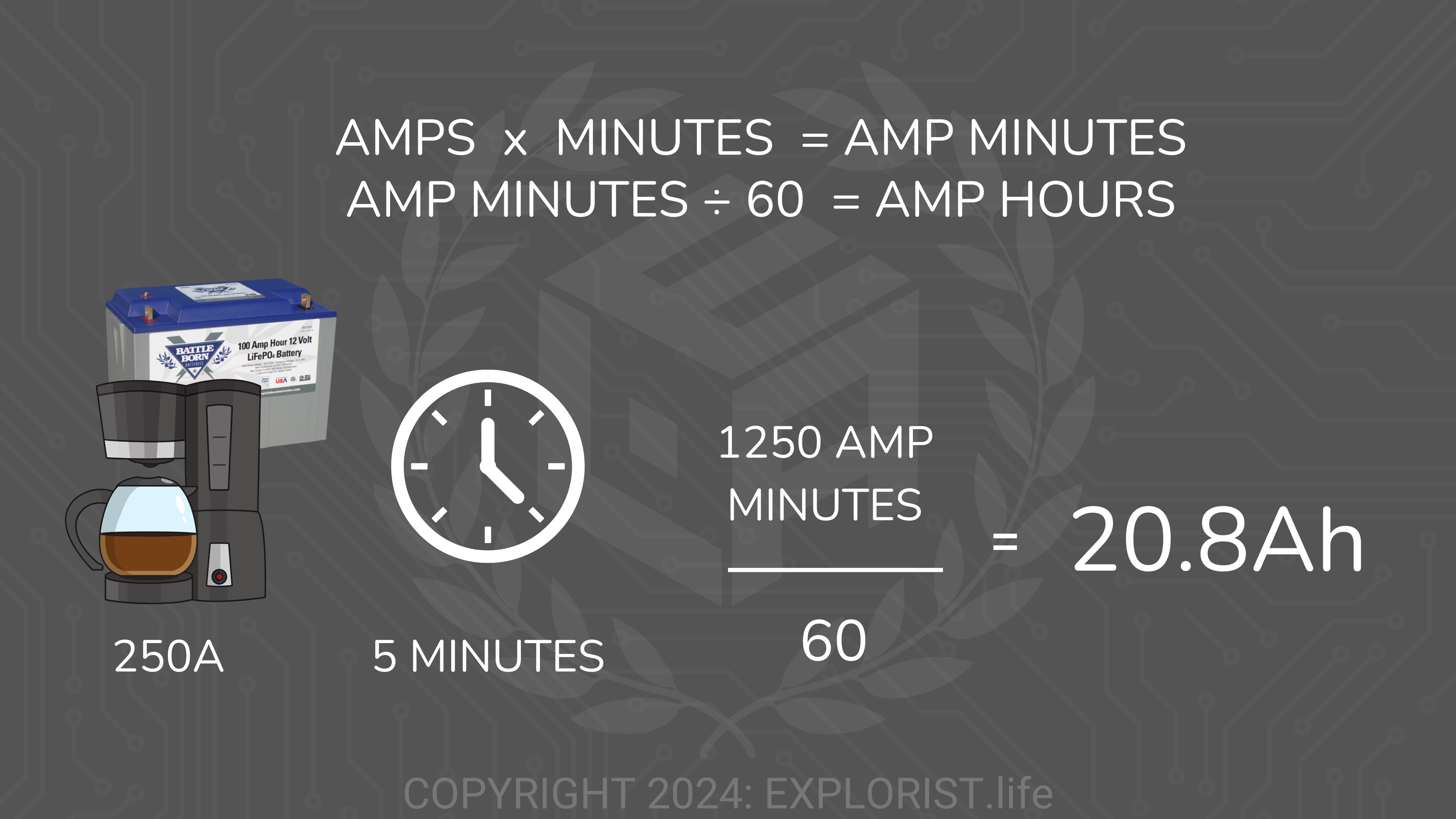
Now you should have a good idea of how to convert back and forth between various electrical units; and we are going to be referring to these conversions as this academy moves forward; so be sure to bookmark this lesson for future reference and come back to it when you need a refresher.
And that wraps up the Electrical Terminology playlist of the EXPLORIST.life – Mobile, Marine, & Off-Grid Electrical Academy; and if you’ve completed all three lessons, passed the quizzes and learned something new; great job and it’s time to move into the next chapter which is going to teach you everything you need to know about system sizing.

